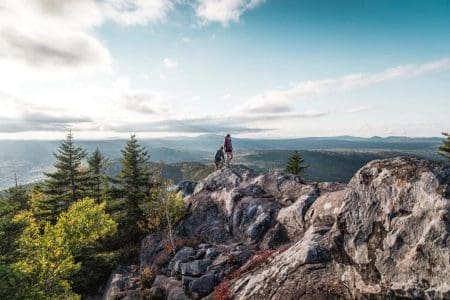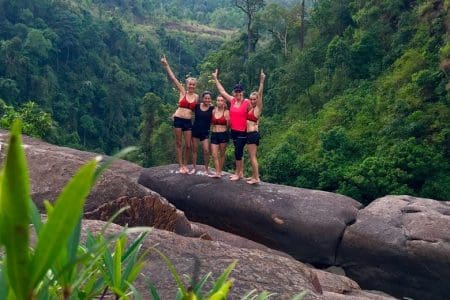Marissa Carruthers takes a once-in-a-lifetime opportunity to see Angkor Wat temple away from the crowds and finds it both an exhilarating and disheartening experience.
It’s an eerie sight; almost apocalyptic. Our tuk tuk pulls into a vast empty car park. Metaphorical tumble weed replaces the usual frenetic hum of tour buses, tuk tuks and cars. The previous wave of chatter from queues that filled the new Angkor Wat ticket office – built in anticipation of the increasing volume of visitors – is replaced with a cool breeze wafting through its cavernous halls.
At the long line of booths, we head to the lone open counter. I ask how many tickets have been sold today – it’s early afternoon on a Tuesday. She replies 32. Sitting in stark comparison, in 2019, Angkor Wat Archaeological Park welcomed 2.2 million visitors through its gates. That’s a daily average of 6,079.
Deserted Angkor Wat
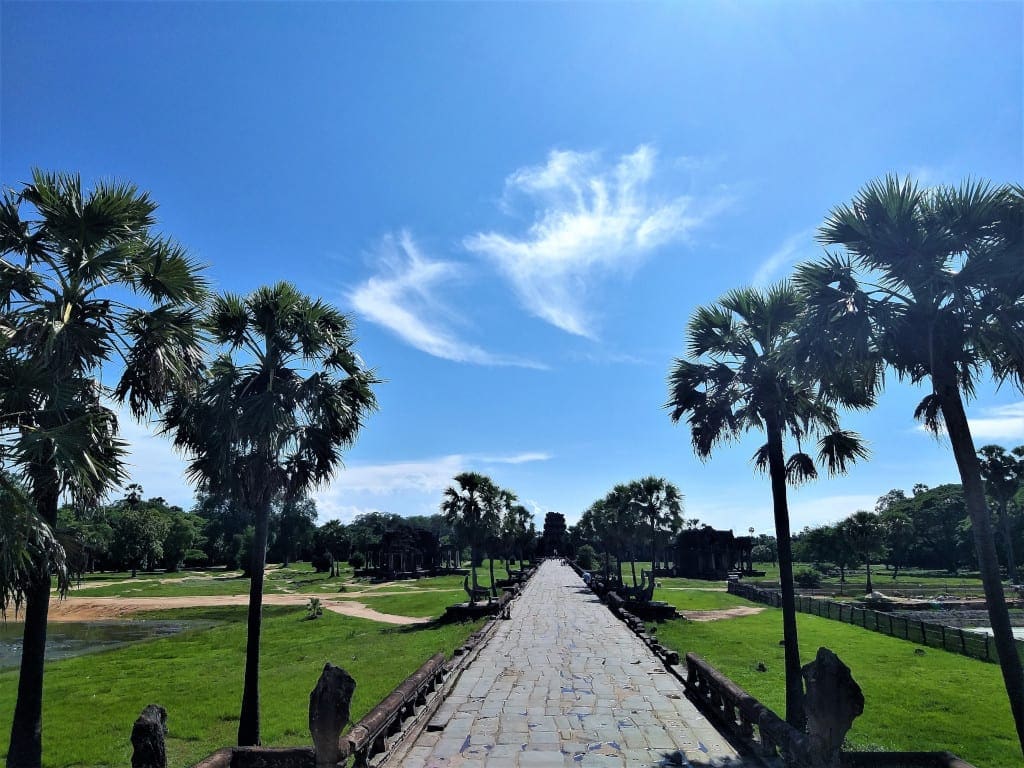
I’ve lived in Cambodia for almost eight years and visited Angkor seemingly countless times. First as a tourist, then escorting visiting friends and family, and for work-related trips.
Each time, I’ve waited in disorderly lines to purchase a ticket and spent lengthy stretches of time tracking down my tuk tuk driver among a sea of hundreds. I’ve grappled in crowds at the Angkor Wat sunrise just to catch a glimpse – any glimpse – of the magnificent temple. I’ve rudely been shoved by over-excited tourists wanting to snap root-riddled Ta Prohm and shared sweat with strangers jostling to see Bayon’s giant stone faces.
Not this time. With global travel pretty much ground to a halt, Cambodia hasn’t welcomed a holiday-maker across its borders since it suspended issuing tourist visas in March. While life has sprung back to relative normal in my hometown of Phnom Penh, the curse of coronavirus has hit the touristic town of Siem Reap hard.
Becalmed Ta Prohm
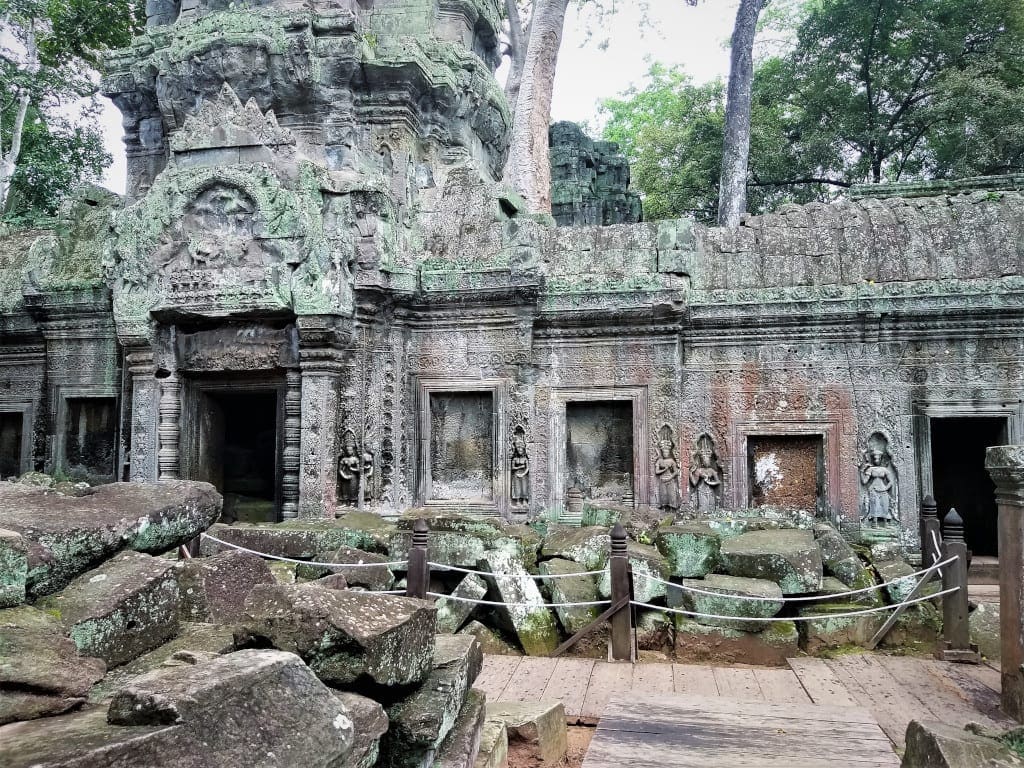
We start our temple tour at the gates of Ta Prohm. The jungle-shaded walkway to the ancient site is strangely quiet. Instead of the masses of kids flogging magnets, scarfs, books and keyrings, guides touting for trade and busking traditional musicians, we spot one sole explorer in the distance. All that can be heard is the call of monkeys, the song of cicadas and birds tweeting among rustling treetops.
Gone are the queues of visitors eager to take a photo in front of the giant roots of the centuries-old kapok and strangler fig trees that consume the 12th century complex. Apart from a young Cambodian couple and three bored security guards mesmerised by their phones, there isn’t another person to be seen as we navigate the majestic site that featured in the Hollywood hit, Lara Croft: Tomb Raider.
Angkor Wat and Thom

As we jump back in the tuk tuk and make our way to Angkor Thom, the sights are just as startling. We pass straight through the South Gate and along seemingly abandoned roads that wind through jungle. Outside multi-faced Bayon temple, we struggle to buy a can of beer. Instead of the normal mesh of vendors, two vie for our attention – sadly, neither have what we’re after but wanting to support the local economy, we buy snacks instead.
Our final stop is Angkor Wat. Only a handful of Khmers pepper its usually-crowded causeway. A red veil flutters in the gentle breeze as an Apsara-dressed model poses for a photoshoot, a few families squat in the sparse shade and a couple of lovers stroll hand-in-hand.
Inside, the narrow corridors are void of people and I admire the intricate carvings that adorn the bas reliefs in tranquil solitude for the first time. As we walk in the shadow of Angkor’s five towers, our silence is only interrupted by a curious Khmer family asking to snap a selfie. We happily oblige and ask to return the favour; each of us eager to capture this surreal but magical moment.
Angkor Rediscovered
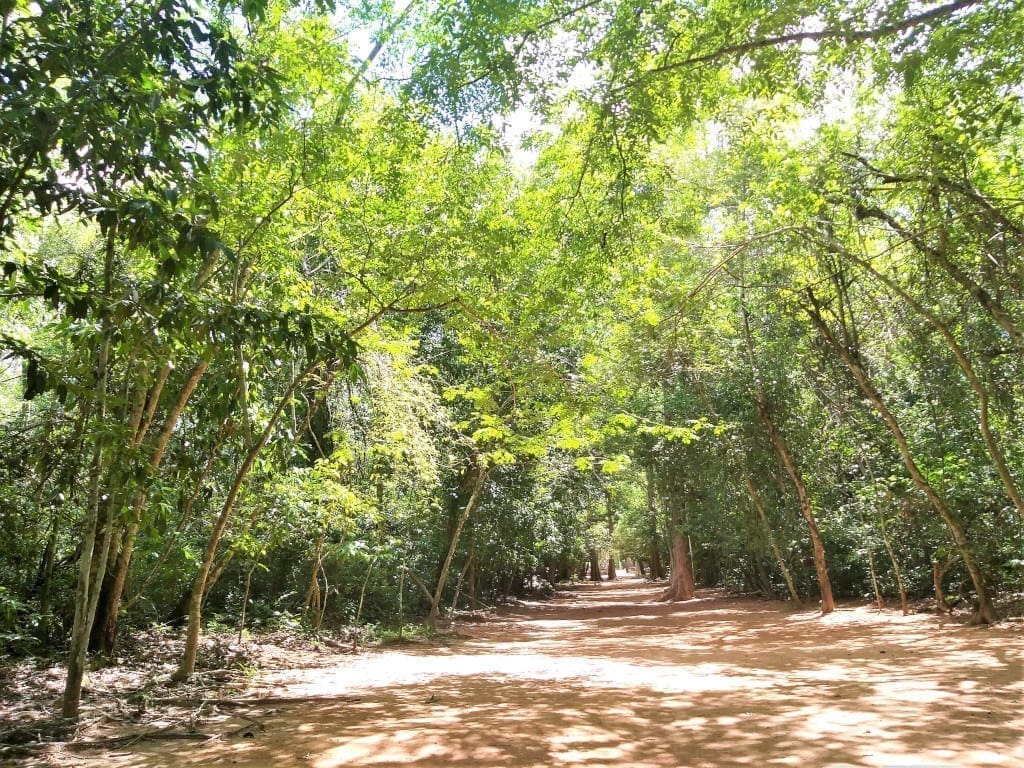
We leave the complex as dusk starts to set in, cyclists, motos and cars fill the park’s roads. Along the banks of Angkor’s moat, families set up picnics and young Cambodians play shuttlecock to the backdrop of temple walls. With tourists gone, locals can finally reclaim the temple they so highly revere, and that is truly special to see.
The day has been a mix of emotions. Surreal, magical, heart-breaking. I never imagined I’d experience Angkor like this; akin to an explorer rediscovering an abandoned empire lost in jungle. While it’s a truly special blessing, empty Angkor also serves as a stark reminder of the devastating impact coronavirus has had on Cambodia. The tuk tuk drivers, food stalls, restaurants, souvenir sellers, tour guides, artists, random entrepreneurs, clothes and other vendors. All but a few vanished.
Siem Reap Ghost Town
Siem Reap town tells the same story. Even on a Saturday night, a few tuk tuks laze around Central Market and I’m able to walk down the stretch of road to Pub Street without being bombarded with, “Tuk tuk, lady?” The lights are off at Pub Street, where the party usually continues until after dawn, and across the city only a few restaurants and bars have reopened.
With international tourism looking like it will be off the cards for a while longer, a huge push is being made for domestic tourism in a country that to date has recorded no official coronavirus deaths. While hotels, restaurants, bars and other businesses are starting to reopen their doors, until the tourists return the fight for survival is beyond tough.
According to the Ministry of Tourism, on August 18 of this year’s Khmer New Year – which was postponed from April until August under Covid-19 prevention measures – Siem Reap proved the most popular destination. It welcomed 44,364 domestic travellers on that day. However, this compares with a reported average of 266,000 pre-coronavirus.
As a place that heavily relies on tourism, businesses have been hit hard by the serious slump in trade. And as we leave the city for home, I realise how, now more than ever, it’s vital that where we can safely, we back the local tourism industry.
For more Cambodia travel inspiration, read Marissa’s Things to Do in Siem Reap Avoiding Angkor.
Where to Stay in Siem Reap
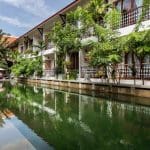
We stayed at Montra Nivesha. The stylish family-run boutique boasts two swimming pools, a well-stocked bar and restaurant, friendly staff that make you feel at home, and chic contemporary Khmer décor throughout. It is running a special price of US$50 a night, including breakfast. If you wish to arrange an Angkor Wat tour, the staff here will willingly assist you.
Listen to our Cambodia and the Coronavirus Podcast.
History of Angkor Wat
If you unfamiliar with the history of the biggest religious structure of the world, click here for an excellent summary of the history of Angkor Wat.
Angkor Wat Dress Code
In recent years there have been stories of people taking nude selfies at the temples of Angkor. Although there is no strict dress code – you can wear shorts, flip-flops and t-shirts as it is likey to be hot whenever you visit Angkor – keep in mind that Angkor Wat is a venerated religious building for millions of people.
Getting to Cambodia
Although things are in a continuous state of flux, these are the current Cambodia entry requirements for tourists, and details of flights to Cambodia.

